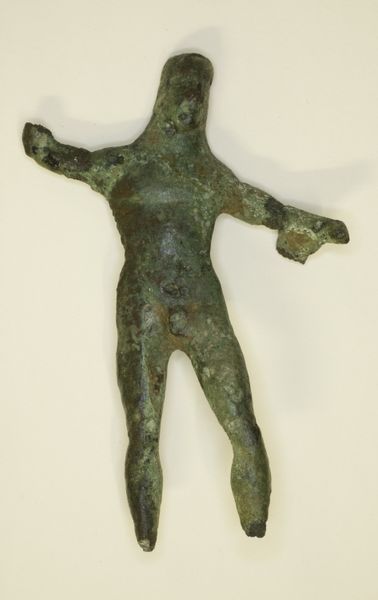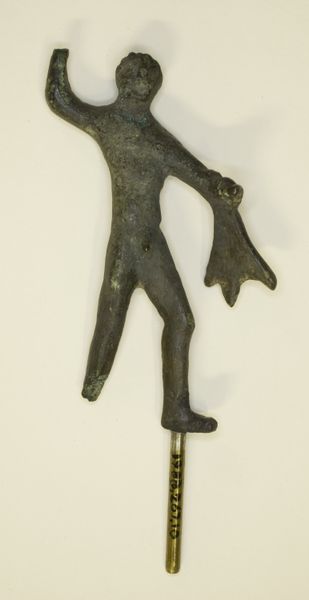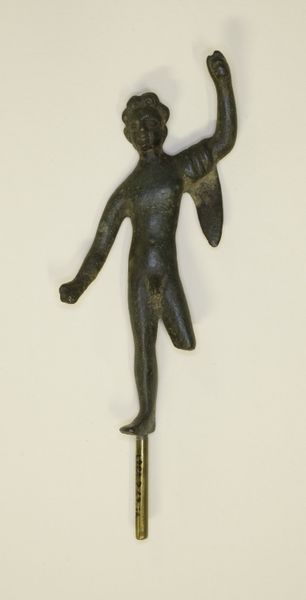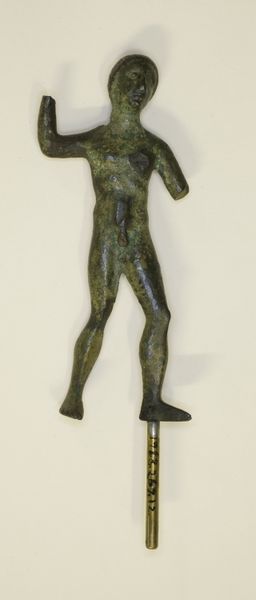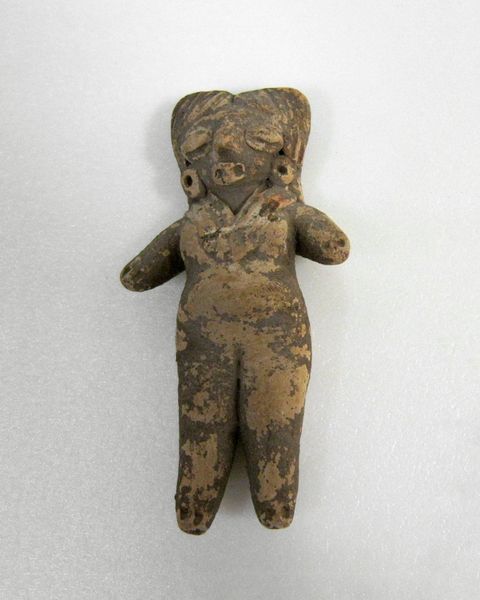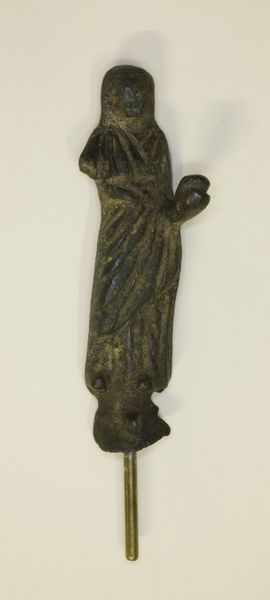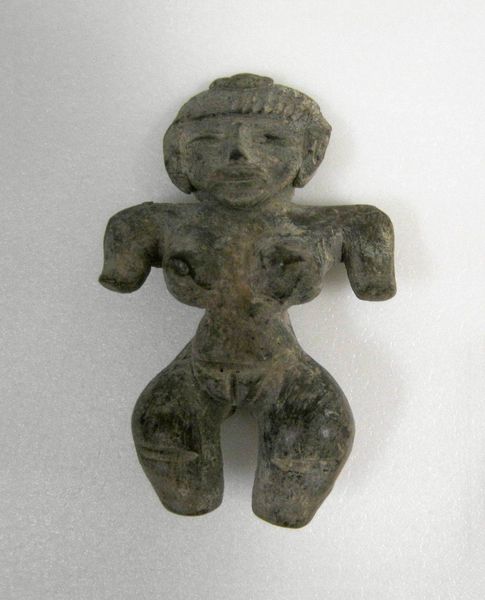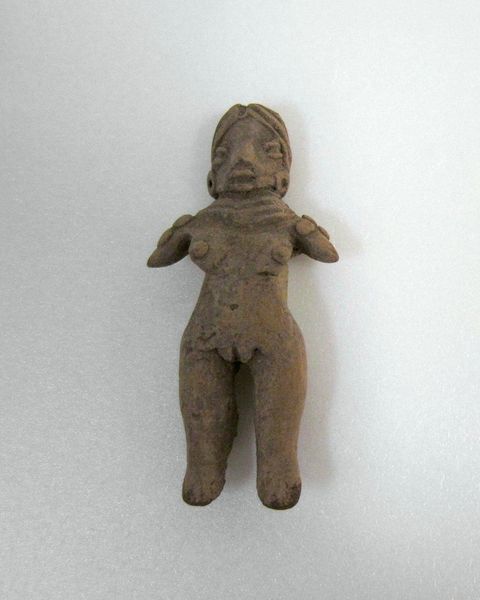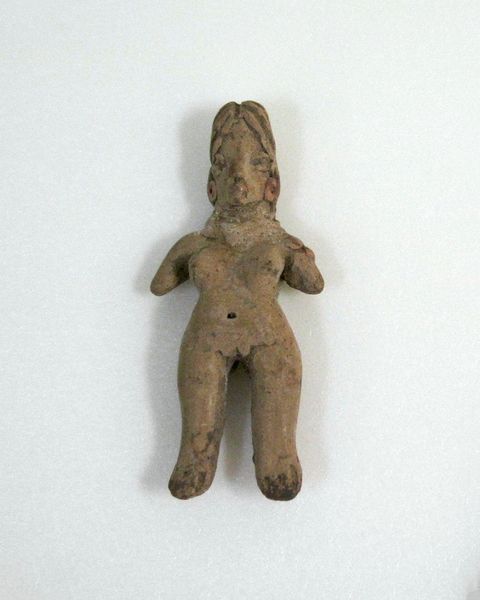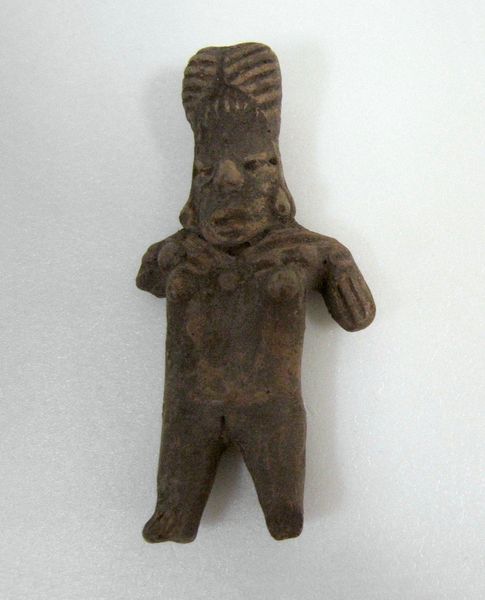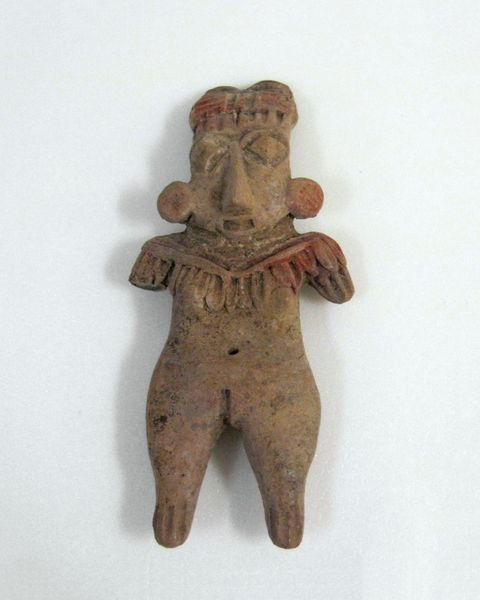
bronze, sculpture
#
sculpture
#
greek-and-roman-art
#
bronze
#
sculptural image
#
figuration
#
ancient-mediterranean
#
sculpture
Dimensions: 10.25 × 6.5 × 2.5 cm (4 × 2 1/2 × 1 in.)
Copyright: Public Domain
Editor: So this is a bronze statuette of Herakles, dating back to the 3rd century. It's currently at the Art Institute of Chicago. The figure's nudity strikes me – it feels both vulnerable and powerful. What can you tell me about how this kind of artwork would have functioned in society at the time? Curator: Good question! Herakles wasn't just a mythological hero; he was a powerful symbol manipulated within a broader system of cultural values and political agendas. The choice to represent him nude taps into the established Greek artistic tradition valorizing the ideal male form. What do you make of the fact that this is a smaller scale work rather than a life-sized marble sculpture? Editor: Well, it makes me think it may have had a more private or personal function, maybe as a votive offering or a household deity? Curator: Exactly! The reduced scale suggests it was likely intended for private devotion, offering protection or blessings within a household. These miniature bronzes democratized access to the divine. Instead of needing to visit the temple, which would likely have state sponsorship, individuals could perform their rites at home. So consider the implications – who gets to control and frame depictions of power like this? Is it the state, or individuals? Editor: That’s fascinating. It shifts my perception from just admiring the aesthetic to thinking about who commissioned it and the message they hoped to convey. I hadn’t considered the tension between state-sanctioned religion and more personal forms of worship. Curator: Right, understanding the role of such a piece really underscores how artistic choices, from medium to size to style, were intertwined with social structures. Editor: This was insightful; I'll consider the audience and function of similar artworks from now on. Curator: Likewise, thinking about how ancient artistic tropes get used and re-used today raises interesting questions about cultural values and continuity!
Comments
No comments
Be the first to comment and join the conversation on the ultimate creative platform.
